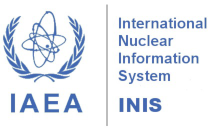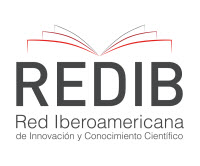Brazilian and international legislation applied to food irradiation: a historical review
DOI:
https://doi.org/10.15392/2319-0612.2025.2827Keywords:
Food irradiation, gamma irradiator, brazilian and internacional legislationAbstract
Food irradiation is a physical process that subjects packaged or bulk foods to doses of ionizing radiation, which are energies high enough to displace electrons from atoms and molecules and convert them into electrically charged particles, known as ions. The standards that establish the requirements for approval of food irradiation process represent a technical set of rules for standardizing ideas. Although food irradiation technology is already approved and regulated by Brazilian Health Regulatory Agency (Anvisa), there are still many obstacles that prevent the complete commercialization of irradiated foods in Brazil, among which is the low consumer acceptance of this type of food. The commercial use of food irradiation technology is growing slowly due to misinterpretations by a large part of Brazilian consumers. Because of this lack of knowledge, laws, and experiments are important, as they define the limits of dose that can be employed in the irradiation process to guarantee the integrity of the product and the health of the consumer. In this work, the survey, analysis, and evolution of Brazilian, and international legislation related to ionizing irradiation practices in food will be carried out. A timeline of the evolution of legislation in Brazil will also be described, characterizing the importance of guidelines involving food irradiation. The irradiation of food favors the provision of food security and ensures the increase in the supply of food products of high biological and sanitary quality, contributing to the promotion of a privileged and sustainable nutritional status for all people.
Downloads
References
[1] PACHECO, N. H. R. Irradiação de alimentos: um estudo de caso. Trabalho de Conclusão de Curso (Especialização em Engenharia de Segurança do Trabalho) – Universidade Tecnológica Federal do Paraná, Ponta Grossa, 2013.
[2] RAVIDRAM, R.; JAISWAL, A. K. Wholesomeness and safety aspects of irradiated foods. Food Chemistry, Norwich, v. 285, n. 1, p. 363-368, 2019. DOI: 10.1016/j.foodchem.2019.02.002. DOI: https://doi.org/10.1016/j.foodchem.2019.02.002
[3] MESQUITA, A. Z. Energia Nuclear - Uma Introdução. Curitiba: UFPR (Universidade Federal do Paraná), 2023. p. 1-249. ISBN 9788584802210.
[4] COSTA, E. G.; SOUZA, P. M Uso da radiação como tecnologia não térmica para a conservação de alimentos. In: Tecnologia de alimentos: fundamentos à inovação. Brasil: 2023. p. 483-534. DOI: 10.36599/editpa-978-65-88890-35-6.009. DOI: https://doi.org/10.36599/editpa-978-65-88890-35-6.009
[5] BRASIL. Ministério da Saúde. Resolução nº 21, de 26 de janeiro de 2001. Brasília: Agência Nacional de Vigilância Sanitária, 2001. Available at: https://bvsms.saude.gov.br/bvs/saudelegis/anvisa/2001/rdc0021_26_01_2001.html. Accessed on: Dec. 14, 2024.
[6] LADEIRA, L. C. D. Desenvolvimento de um Sistema para Automação & Controle de Irradiações de Curta Duração em Irradiadores Gama Panorâmicos com Estocagem a Seco. Tese de Doutorado (Doutorado em Ciência e Tecnologia das Radiações, Minerais e Materiais) – Centro de Desenvolvimento da Tecnologia Nuclear, Belo Horizonte, 2015.
[7] RAMOS, R. BATISTA, E. V. Irradiação de alimentos: Revisão comparativa, histórica e difusão do processo. Brazilian Journal of Science, Rio Verde, v. 2, n. 8, p. 94-103, 2023. DOI: 10.14295/bjs.v2i8.313. DOI: https://doi.org/10.14295/bjs.v2i8.313
[8] FOOD AND AGRICULTURE ORGANIZATION. Codex Alimentarius: international food standards. Available at: https://www.fao.org/fao-who-codexalimentarius/en/. Accessed on: Dec. 18, 2024.
[9] GOVERNO FEDERAL DO BRASIL. Agência Nacional de Vigilância Sanitária – Anvisa. Available at: https://www.gov.br/anvisa/pt-br/assuntos/alimentos/participacao-em-foruns-internacionais/interface-dos-comites-do-codex-alimentarius-com-as-atividades-da-area-de-alimentos-da-anvisa. Accessed on: Dec. 14, 2024.
[10] FOOD AND AGRICULTURE ORGANIZATION. Codex Alimentarius. Code of Practice for Radiation Processing of Food (CXC 19-1979). Available at: https://www.fao.org/fao-who-codexalimentarius/sh-proxy/en/?lnk=1&url=https%253A%252F%252Fworkspace.fao.org%252Fsites%252Fcodex%252FStandards%252FCXC%2B19-1979%252FCXP_019e.pdf. Accessed on: Dec. 14, 2024.
[11] FOOD AND AGRICULTURE ORGANIZATION. Codex Alimentarius. Revised Codex General Standard for Irradiated Foods (CODEX STAN 106-1983). Available at: https://www.piwet.pulawy.pl/irradiacja/codexalimentarius1.pdf. Accessed on: Dec. 14, 2024.
[12] INTERNATIONAL ORGANIZATION FOR STANDARDIZATION. Food irradiation — Requirements for the development, validation and routine control of the process of irradiation using ionizing radiation for the treatment of food (ISO 14470:2011). 01st Dec. 2011.
[13] WORLD HEALTH ORGANIZATION. Food Irradiation: A technique for preserving and improving the safety of food. Geneva: World Health Organization, 1988, p. 1-87. ISBN 9241542403.
[14] CODE OF FEDERAL REGULATIONS. Irradiation in the production, processing and handling of food (21 CFR Part 179). Available at: https://www.ecfr.gov/current/title-21/part-179. Accessed on: Dec. 14, 2024.
[15] CONSOLIDATED REGULATIONS OF CANADA. Food and Drugs Act and Regulations, Parte B, Division B.26. Available at: https://laws.justice.gc.ca/eng/regulations/C.R.C.,_c._870/index.html. Accessed on: Dec. 14, 2024.
[16] PARLAMENTO EUROPEU E DO CONSELHO. Diretiva 1999/2/CE, de 22 de fevereiro de 1999. Available at: https://eur-lex.europa.eu/LexUriServ/LexUriServ.do?uri=CONSLEG:1999L0002:20081211:PT:PDF. Accessed on: Dec. 14, 2024.
[17] PARLAMENTO EUROPEU E DO CONSELHO. Diretiva 1999/3/CE, de 22 de fevereiro de 1999. Available at: https://eur-lex.europa.eu/legal-content/PT/TXT/PDF/?uri=CELEX:31999L0003. Accessed on: Dec. 14, 2024.
[18] NATIONAL STANDARD OF THE PEOPLES REPUBLIC OF CHINA. National Food Safaty Standards for Irradiated Food (GB 14891-2016), de 23 de dezembro de 2006. Available at: https://www.fsis.usda.gov/sites/default/files/media_file/2021-03/gb-18524-2016.pdf. Accessed on: Dec. 14, 2024.
[19] FOOD STANDARDS AUSTRALIA NEW ZELAND. Norma 1.5.3 - Irradiation of Food. Available at: https://www.foodstandards.gov.au/sites/default/files/food-standards-code/applications/Documents/AR_A1038%20Irradiation%20of%20Persimmons_SD4%20Standard%20153%20_markup1.pdf. Accessed on: Dec. 14, 2024.
[20] BRASIL. Ministérios da Marinha de Guerra, do Exército e da Aeronáutica Militar. Decreto-Lei Nº 986, de 21 de outubro de 1969. Brasília: Ministérios da Marinha de Guerra, do Exército e da Aeronáutica Militar, 1969. Available at: https://dou.vlex.com.br/vid/decreto-lei-n-986-751021961. Accessed on: Dec. 14, 2024.
[21] BRASIL. Ministério da Saúde. Decreto nº 72.718, de 29 de agosto de 1973. Brasília: Ministério da Saúde, 1973. Available at: https://legislacao.presidencia.gov.br/atos/?tipo=DEC&numero=72718&ano=1973&ato=a35gXW65UenRVT3b4. Accessed on: Dec. 18, 2024.
[22] BRASIL. Comissão Nacional de Energia Nuclear. Resolução nº 05/80, de 26 de setembro de 1980. Diário Oficial da União: seção 1, Brasília, DF, edição 19291. Available at: https://www.gov.br/cnen/pt-br/acesso-a-informacao/atos-normativos-cnen/comissao_deliberativa/resolucoes/1980/rs_cnencd_05_1980.pdf. Accessed on: Dec. 18, 2024.
[23] LEVY, D. et. al. Irradiação de alimentos no Brasil: revisão histórica, situação atual e desafios futuros. Brazilian Journal of Radiation Sciences, Rio de Janeiro, v. 8, p. 01-16, 2020. DOI: 10.15392/bjrs.v8i3.1241. DOI: https://doi.org/10.15392/bjrs.v8i3.1241
[24] BRASIL. Ministério da Agricultura, Pecuária e Abastecimento. Portaria nº 28, de 14 de abril de 2004. Brasília: Ministério da Agricultura, Pecuária e Abastecimento, 2001.
[25] BRASIL. Ministério da Agricultura, Pecuária e Abastecimento. Instrução Normativa nº 9, de 24 de fevereiro de 2011. Brasília: Ministério da Agricultura, Pecuária e Abastecimento, 2011. Available at: https://www.normasbrasil.com.br/norma/instrucao-normativa-9-2011_78333.html. Accessed on: Dec. 18, 2024.
Downloads
Published
Issue
Section
Categories
License
Copyright (c) 2025 Bianca Senario Felix, Daniel Silva Calheiro, Amir Zacarias Mesquita, Thessa Cristina Alonso, Renata Cordeiro Lopes, Mariana Natividade Alonso

This work is licensed under a Creative Commons Attribution 4.0 International License.
Licensing: The BJRS articles are licensed under a Creative Commons Attribution 4.0 International License, which permits use, sharing, adaptation, distribution and reproduction in any medium or format, as long as you give appropriate credit to the original author(s) and the source, provide a link to the Creative Commons license, and indicate if changes were made. The images or other third party material in this article are included in the article’s Creative Commons license, unless indicated otherwise in a credit line to the material. If material is not included in the article’s Creative Commons license and your intended use is not permitted by statutory regulation or exceeds the permitted use, you will need to obtain permission directly from the copyright holder. To view a copy of this license, visit http://creativecommons.org/licenses/by/4.0/






















